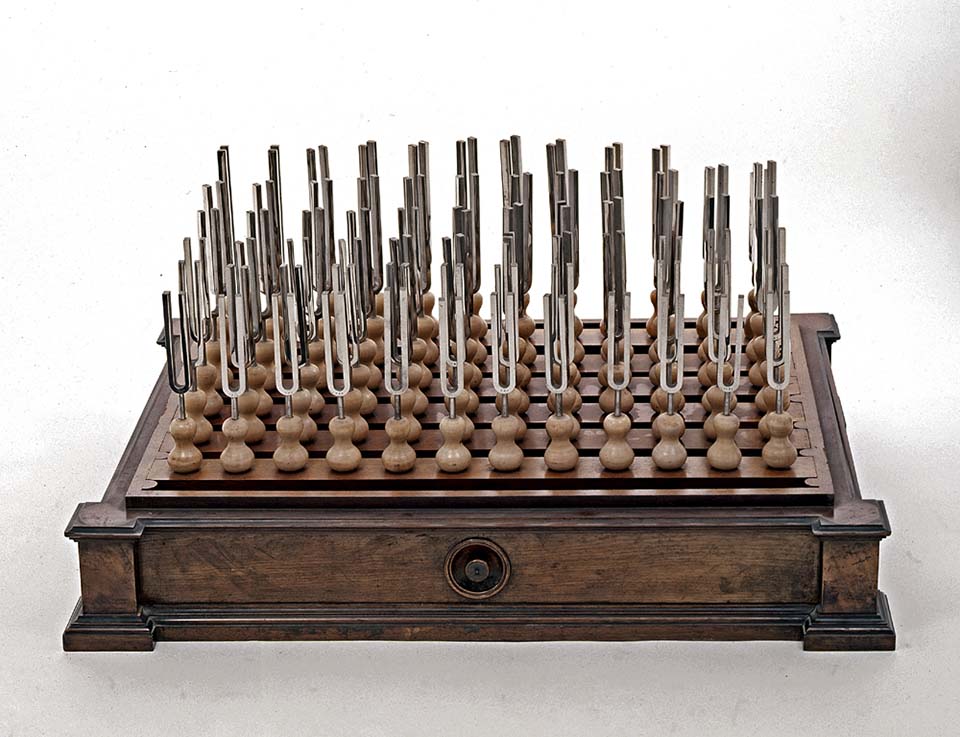
If you come from Great Britain, you might assume that A440 is the number of a road. And you would be partly right, because until the 1970s it was the number of the road linking the spa town of Great Malvern to the market town of Pershore which lies on the banks of the River Avon. Both towns are in the picturesque English county of Worcestershire, famous for the fermented liquid condiment which bears its name.
For musicians, A440 will ring other bells, if you’ll forgive the clumsy pun. This is because the pitch of 440 vibrations per second produces the note “A” which is six notes above middle C on a piano keyboard. It’s commonly used as the standard international tuning for most Western musical instruments and orchestras. It’s also known as 440Hz, an abbreviation for “Hertz” which means cycles or vibrations per second. It has nothing to do with the car rental company but honours the 19th century scientist Heinrich Rudolf Hertz who proved the existence of electromagnetic waves.
There’s nothing special or significant about 440 Hz; it’s an artificial figure anyway, because minutes and seconds are purely human constructs dating from the invention of clockwork in the Middle Ages. The note “A” was used because most orchestral instruments were strings, all of which had an A string. Having established a common “A”, the other strings of the instrument could then be tuned proportionally. This is a phenomenon we witness even today, at the start of every orchestral concert.
Before the 18th century there was no standard pitch. It varied from country to country, from town to town and even from village to village. In a particular church, the organ pitch would vary over time because of the way organs were tuned, involving physical changes to the length of the pipes and tending to push the pitch upwards. Standard pitch was not possible anyway before the invention of the tuning fork in 1711.
Enter Johann Heinrich Scheibler: a German silk dealer with a passion for acoustics. He invented a device which he called a tonometer, an assembly of many different tuning forks. Travelling around Europe, Scheibler measured the pitch of other tuning forks in various orchestras and found not surprisingly that “A” varied widely from place to place. In 1834, he proposed that A440 as a reasonable average. Even so, pitch differences between countries persisted and although A440 was widely used, it didn’t become an international standard until 1975.

“So where’s the conspiracy?” you might be asking. (The thought had occurred to me – Ed.) Now I have to admit that this particular conspiracy hasn’t received the publicity that has attended daft notions like the flat Earth, the faked moon landing and chemtrails. But it shares much the same sort of narrative in that most conspiracy theories involve governments, organizations or unknown persons in high office who employ sinister methods to influence or control the population. The “sinister forces” are people in power and can even include teachers, scientists and doctors or almost anyone who is perceived to have a modicum of intelligence.
The enthusiasts of the A440 conspiracy claim that the frequency of 440 Hz causes emotional distress, physical illness or even destructive anti-social behaviour in societies. They claim that 440Hz doesn’t align with the frequency of the universe, whatever that is supposed to mean. The conspiracy has been popularized by one Leonard Horowitz, a former dentist and self-help author who modestly described himself as “The King David of Natural Healing”. He also promotes a raft of pseudo-scientific conspiracy fantasies. It was he for example, claimed that the Nazi politician Joseph Goebbels encouraged the use of A440 tuning in the late 1930s in order to subdue the German population. Some people believe that the Rockefeller Foundation wanted the United States to adopt the 440 Hz standard in 1935 as part of a “war on consciousness leading to musical cult control”.
The Czech data scientist and musician Jakub Marian has described the A440 conspiracy as “the most ridiculous conspiracy theory of all time.” The supporters of the notion often argue that A should be tuned to 432 Hz because they claim that this frequency promotes healing properties and aligns with the vibrations of nature. But what’s the difference between 440Hz and 432Hz is musical terms? Well, not a lot. On the keyboard the lower note next to A is the note A flat which has a frequency of 415Hz. That means that 432Hz is about a third of the way between A and A flat. Most people simply wouldn’t notice any difference.
However, the important thing is that when A is tuned to 440Hz it is merely a reference point. The note “A” could be entirely absent in the music itself, or rarely heard. In addition, pitch rises with temperature so that even when an orchestra tunes to 440Hz at the start of a concert the pitch is significantly higher an hour or so later.
Recent psychological studies have revealed that conspiracy theories are attractive because they are so simple and they appeal to the uneducated. In Psychology Today, journalist Jennifer Latson writes, “Researchers have found that the ‘conspiracy mentality’ correlates with particular personality traits, including low levels of trust…low self-esteem and paranoid thinking.”
About half the population of the USA believe in at least one conspiracy theory and that sinister forces are secretly at work. The A440 conspiracy shares a similar narrative with the so-called Protocols of the Learned Elders of Zion, the Indigo Children, the Flat Earth, the evil chemtrails and the so-called Solfeggio Frequencies, another bundle of half-baked musical nonsense. To my mind, the whole lot can be safely forgotten and unceremoniously chucked into the rubbish bin of human gullibility and delusion.
 |
 |
 |





